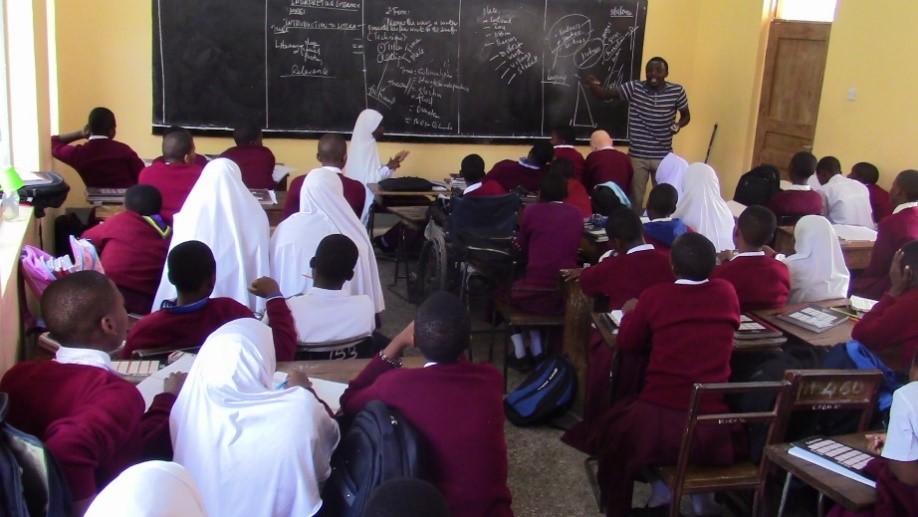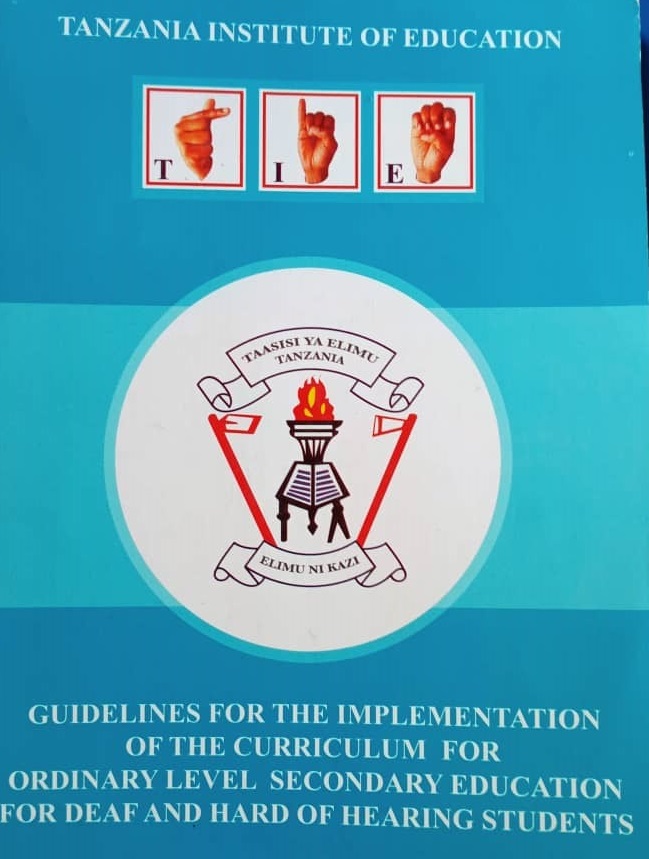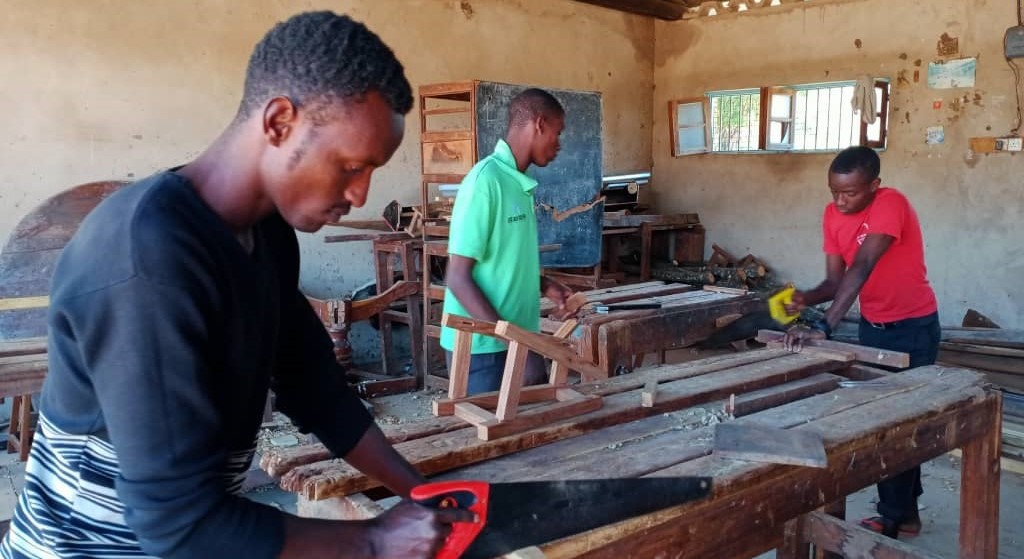Resource Type
Blog
Photo: Deaf youth learning carpentry at a vocational training college in Tabora, Tanzania. Picture courtesy: Ildephonce Mkama
By Dr. Ildephonce Mkama, Ph.D.
Inclusive education requires schools and educators to welcome all types of learners and accommodate their diverse needs. Toward this end, the Ministry of Education in Tanzania has been working on designing an education model to help the inclusion of deaf learners in mainstream schools.
This initiative has led to the preparation and launch of specific guidelines for the inclusion of deaf learners in secondary education, along with the development of a digital Tanzanian Sign Language (TSL) dictionary. However, implementation of the guidelines and use of the TSL dictionary has been slow, mainly due to the lack of (1) adequate training skills among teachers to teach sign language to deaf and hard of hearing students, (2) sign language syllabus for deaf and hearing students, and (3) digital accessibility of TSL textbooks. Further, the Government of Tanzania has also ratified and implemented an inclusive education policy and strategy for mainstream classrooms to include marginalized groups such as children with disabilities, girls, ethnic minorities, and children from poor socio-economic and cultural backgrounds.
However, these strategies have proven limited in their success to promote inclusive education for students with disabilities, especially deaf learners across Tanzania. For example, inclusion of deaf learners in the entire learning process is continuously raising challenges with regard to their learning. My research shows that the new policies in place have yet to show significant impact on the learning experiences of deaf learners within the school culture. The research further reveals that deaf learners want the nation’s education policy to guarantee them the freedom to explore whatever learning path they wish to take. Evidence from research by Maria Brons and Bernadette Namirembe highlights that deaf students in Tanzania have consistently remained academically behind their hearing peers.
According to research by Mkama and Storbeck, of the 86 secondary school students included in a study, 54% dropped out of school and 82% of those students who reached grade 12 failed in their final examination. Such high-grade dropout rates show that a lot needs to be done for education to be truly inclusive of deaf learners so that they can enjoy improved educational outcomes and a better quality of life.

Picture courtesy: Ildephonce Mkama
Further, tracking the journey of 86 deaf students over a 10-year period (2009–18) in inclusive secondary education practices in Tanzania revealed that fifty-eight of those students said they felt unprotected and that they do not truly fit into a mainstream school setting.
“Teachers come with their negative feelings over us—that we’re slow learners—and that affects us in learning. There are some teachers who believe that we are ignorant of everything,”—Study Participant.
The above claim is supported by Marsharck and Swanwick who show how teacher attitudes impact student learning. Classroom observations revealed that teachers were slow to change their teaching practices when deaf students were present. For example, most teachers do not use the national sign language, TSL, in class despite its use being prescribed as the language of instruction in Tanzania’s National Policy of Education. Consequently, deaf students depend mostly on private reading and discussions despite the fact that reading is not an accessible avenue for learning if they are not literate in the local spoken and written language.
Moving towards Inclusion
There is clearly a need to bridge the gap between educational practices for deaf learners and their hearing counterparts by adapting to the “school culture” and “culturally responsive pedagogy” approaches developed by Jerome Bruner and Gloria Ladson-Billings to build interaction and collaboration between students and teachers. In this regard, the adoption of the bilingual-bicultural model—predicated on allowing both signed and spoken languages to be used equally in a school setting—bears promise for the inclusion of deaf students, given its ability to promote collaboration among deaf and hearing students and their hearing peers. Let’s work on implementing that diligently so that deaf learners across Tanzania have an equal chance at success as their hearing peers.

Ildephonce Mkama is a researcher and consultant in Deaf Education and Linguistics and has worked on several projects in the area of inclusion of deaf learners in Tanzania’s mainstream secondary schools.
Cited works
Brons, M., & Namirembe, B. (2018). Improving Learning Outcomes for all: Lessons Learned from Capacity Building of Teachers of the Deaf for Inclusive Classrooms in Tanzania. In A. Breedveld, & J. Jansen, Education for Life in Africa (pp. 149-164). Leiden: University of Leiden.
Bruner, J. (1996). Culture of Education. London: Havard Unversity Press.
Geneva, G. (2002). Preparing for Culturally Responsive Teaching. Journal of Teacher Education, 53(2), 106-116.
Marsharck, M. (2007). Raising and Educating a Deaf Child: a Comprehensive Guide to the Choice, Controversies, and Decision Faced by Parents and Educators (2nd ed.). New York: Oxford University Press.
Swanwick, R. (2017). Languages and Languaging in Deaf Education. New York: Oxford University Press.
URT. (2018). National Strategy for Inclusive Education, 2018-2021. Dodoma: MoEST.
Mkama, I. (2021). An indepth Exploration of the First Phase of Inclusive Deaf Education in Tanzania. University of the Witwatersrand, Center for Deaf Studies. Jihannesburg: Unpublished.
Mkama, I. (2021). Inclusive Education in Africa: a Phenomenological Perspective. International Congress on Education of the Deaf (pp. 1-10). Brasbane: ICED.
Mkama, I., & Storbeck, C. (In press). The impact of school culture on the academic progress of deaf learners in Tanzanian inclusive Schools. International Journal of Learning and Change, 1-11.
IEI Research Exchange Blog Series consists of independent opinion pieces by the author/s. Any views or opinions represented within are personal and belong solely to the blog owner and do not represent those of people, institutions, or organizations that the owner may or may not be associated with in professional or personal capacity, unless explicitly stated.

